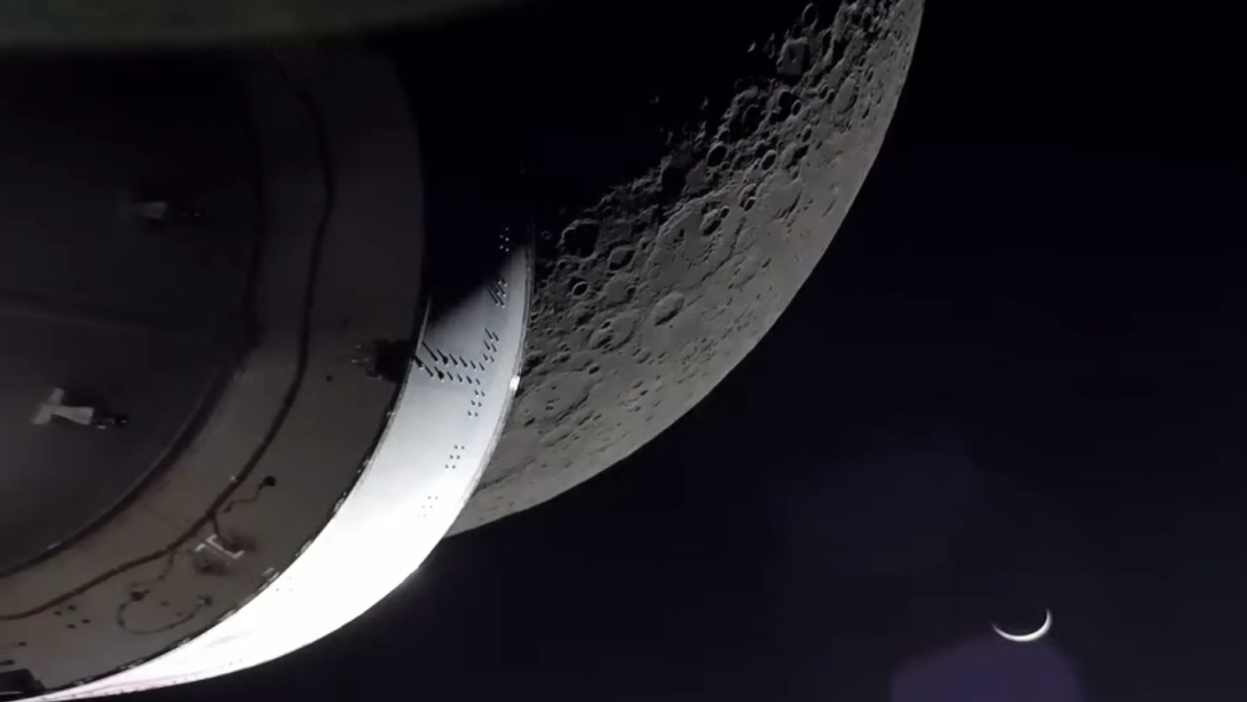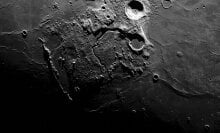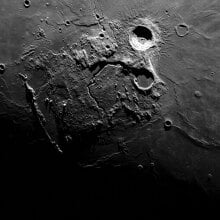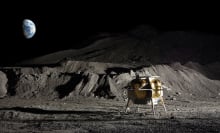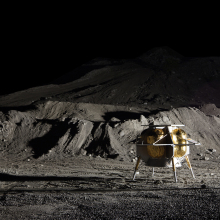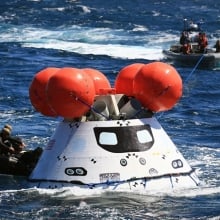The Orion spacecraft had an intimate brush with the lunar terrain on Monday, hugging the moon's curves just 80 miles above the surface.
Shortly after it emerged around the bend, NASA's moonship delivered some mind-warping photographs that flipped the script on our place in space: The crescent rising in the distance was not the object folks are accustomed to seeing as a clipped fingernail in the sky.
It was us.
"In this view, we see 8 billion human lives, all existing upon our pale blue dot, our blue marble, our very own Spaceship Earth," said Sandra Jones, broadcasting live commentary from mission control in Houston. "And after a long journey, Orion is now coming home."
Tweet may have been deleted (opens in a new tab)
The close approach to the surface involved a 3.5-minute engine firing to increase the moonship's speed over 650 mph, or 960 feet per second. The maneuver was crucial for giving Orion the slingshot it needed to get back to Earth and complete the Artemis I flight test.
Want more science and tech news delivered straight to your inbox? Sign up for Mashable's Top Stories newsletter today.
Though no one is inside Orion for this 25-day maiden voyage, a successful empty flight will clear the way for astronauts aboard the spaceship next time, with a sequel mission involving a crew slated for as early as 2024.
Tweet may have been deleted (opens in a new tab)
NASA wants to one day build a lunar-orbiting base, known as Gateway, and ferry astronauts back-and-forth to a moon camp, where it will send the first woman and person of color to walk at the moon's south pole. There astronauts will spend long stretches conducting research and gathering samples.
All the while, the agency will keep one eye fixed on the red planet some 140 million miles in the distance. The goal is to use the moon as a training ground for sending humans to Mars.
During Monday's flyby, NASA lost touch with Orion as anticipated for about a half-hour as the spacecraft crossed behind the moon and harnessed its gravity to accelerate. The moon blocks the signal to NASA's Deep Space Network, the giant Earth-based radio dish system that allows communication with spacecraft throughout the solar system. Mission control regained contact with the moonship immediately after.
NASA expects the spacecraft to splash down in the Pacific Ocean in five days on Dec. 11.
